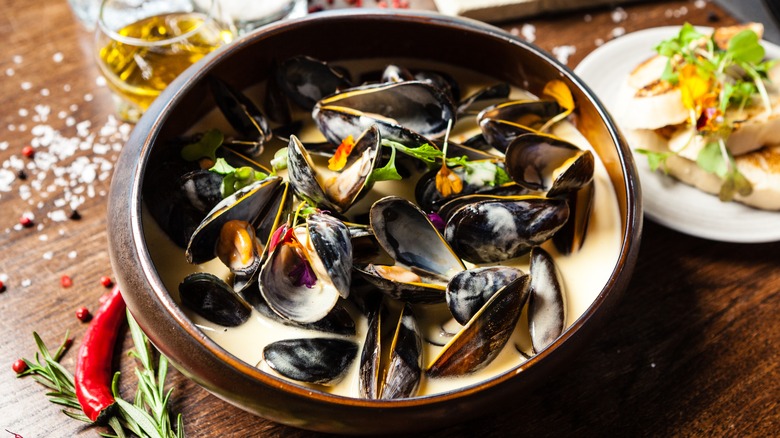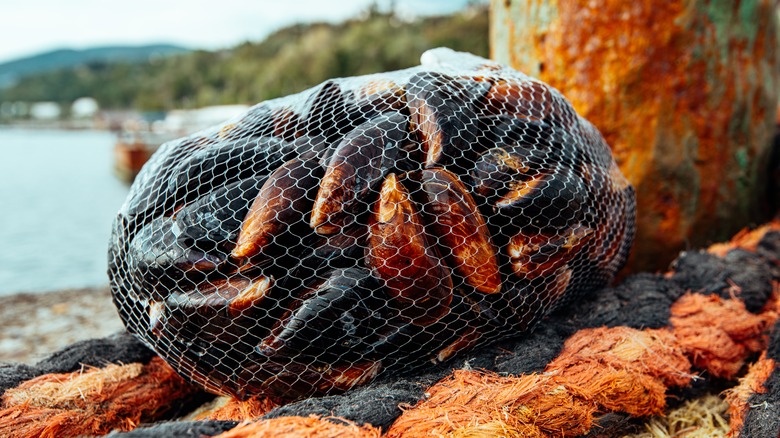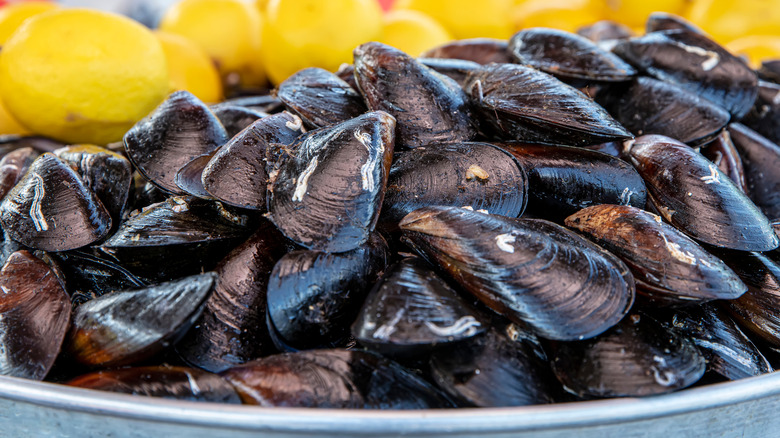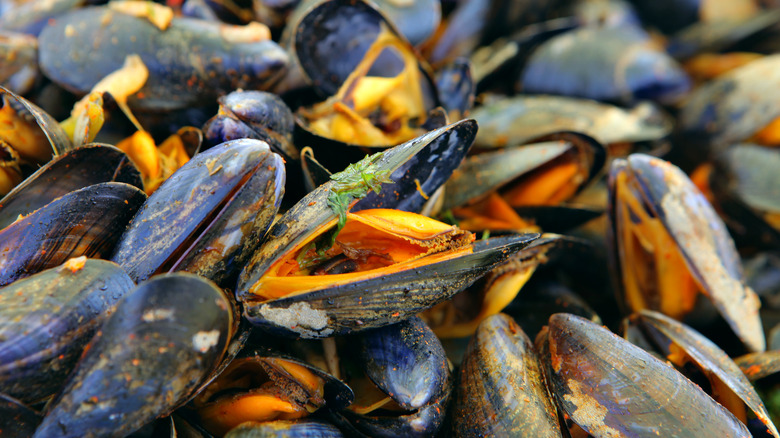Most Of The World's Mussels Come From This Country
There is something special about seafood. Of course, there are those picky eaters that can't get over the taste of fish or the texture of mollusks, but those of us who have embraced the cool, briny beauty of what the sea has to offer have never gone back. Maybe it's because they seem a world apart from us, thriving under the watery depths, or maybe it's because there is nothing else that has the same unique taste. Whatever it is, some people would do anything to get a bag of crab boil to go or sit down with a bottle of champagne and a plate full of fresh oysters.
A particularly beloved shellfish is the mussel. Mussels, like oysters and scallops, are bivalve mollusks, meaning that they have a hinged shell and contain a soft (and delicious) invertebrate (via the National Ocean Service). They are well suited to various cultural cuisines, whether you prefer them in a coconut curry or with a creamy garlic flavor. These little shellfish are ridiculously yummy almost any way you prepare them, and while you might be able to find them at fresh seafood markets around the world, there is one country in particular that dominates the mussel industry.
The mussels in China
If you've taken a good look at a world map recently, you'll note that China's coastline is quite long, approximately 9,000 miles, according to World Atlas. In 2012, along this vast coastline, Circle of Blue reports that roughly 13 million tons of various shellfish were harvested, 70% of which came from the province of Shandong along the Yellow Sea. XinhuaNet explains that to date, Rizhao City is the largest mussel breeding base in China with 20,000 hectares dedicated to the industry.
China harvested almost half the global share of mussels in 2018, or about 1 million tons (via Seafish). But while China is responsible for sourcing most of the world's mussels, the Food and Agriculture Organization says that most of that harvest goes on to feed fisheries, not humans. Spain produces most of the mussels meant for human consumption, annually harvesting about 250,000 tons.
History of mussel consumption
You might think that because mussels tend to drag the depths of the ocean, people didn't start munching on shellfish until late in human history (long after the invention of boats and wove nets), but United Press International tells a different story. There is evidence that Neanderthals were consuming mussels up to 80,000 years ago. So, the next time you go to your favorite seafood restaurant and crack open some shellfish, remember that you are carrying on a millennia-old tradition.
In China, Shine says that mussels are called haihong aka "marine rainbow" and there are over 50 species recognized on the Chinese coast today including the blue mussel, green mussel, and the thick shell mussel. According to the "Goods and Services of Marine Bivalves," records about Chinese shellfish culture have been found dating back 2,000 years, but it was in the 1950s when breeding techniques were adapted and mussels and other mollusks began to be farmed on a larger scale.
Why you should be eating more mussels
Mussels are not only delicious, but also great for your body. Healthline claims that shellfish are a fantastic source of lean protein, omega-3 fatty acids, and nutrients like iron, zinc, magnesium, and vitamin B12. The site says that consistently consuming shellfish can improve your brain and heart health and that they best retain these nutrients when steamed or baked.
You can buy mussels pretty cheaply compared to oysters, but Bon Appétit says you should buy farmed, rope-grown mussels for a good meal because, at the end of the day, you get what you pay for. These kinds of mussels are environmentally friendly and commonly the freshest on the market, so avoid the frozen food section of your supermarket, as you're sure to be disappointed by their flavor and texture.



